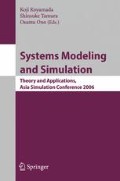Abstract
Mathematical and computational framework of computational material diagnostics method based on limited indentation tests is proposed. An inversion method aims to determine elastoplastic properties from an indentation loading curve. Mathematical model, based on deformation theory, leads to quasi-static elastoplastic contact problem, given by the the monotonically increasing values α i > 0 of the indentation depth. The identification problem is formulated as an inverse problem of determining the stress-strain curve σ i = σ i(e i from an experimentally given indentation curve P = P(α). The inversion method is based on the parametrization of the stress-strain curve, according to the discrete values of the indentation depth, and uses only a priori information as monotonicity of the unknown function α i = σ i(e i). It is shown that the ill-conditionedness of the identification problems depends on the state discretization parameter Δe i. An algorithm of optimal selection of state discretization parameters is proposed as a new regularization scheme. Remeshing algorithm presented here allows to find the unknown contact zone on each step of indentation with high accuracy. Numerical parametric studies are performed for different materials with various elastic and plastic properties. The obtained results show high predictive capability of the proposed computational model. The presented numerical results permit also to construct relationships between various parameters chracterizing material behaviour under spherical indentation.
Access this chapter
Tax calculation will be finalised at checkout
Purchases are for personal use only
Preview
Unable to display preview. Download preview PDF.
References
Budiansky, B., A reassessment of deformation theories of plasticity, Journal of Applied Mechanics, 1959, 26, pp.259–264.
Fleck, N.A. and Hutchinson, J.W., A reformulation of strain gradient plasticity. Journal of the Mechanics and Physics of Solids, 2001, 49, pp.2245–2271.
Hasanov, A., An inverse problem for an elastoplastic medium, SIAM Journal on Applied Mathematics, 1995, 55, pp. 1736–1752.
Hasanov, A. and Seyidmamedov, Z., Determination of unknown elastoplastic properties in Signorini problem, International Journal Non-Linear Mechanics, 1998, 33, pp.979–991.
Hasanov, A., Qualitative behaviour of solutions of unilateral elliptic problems with perturbing the unknown boundary. I. The Theory. Applied Mathematics and Computation, 2000, 109, pp.249–260.
Hasanov, A., An inversion method for identification of elastoplastic properties for engineering materials from limited spherical indentation measurements, Inverse Problems in Science and Engineering, 2006 (to appear).
Ishlinski, A., An axisymmetric plasticity problem and Brinell number. Journal of Applied Mathematics and Mechanics, 1944, 8, pp.204–224.
Johnson, K.L., The correlation of indentation experiments. Journal Mechanics and Physics of Solids, 1970, 18, pp.115–126.
Johnson, K.L., Contact Mechanics, 1985, Cambridge Universiry Press, Cambridge.
Kachanov, L.M., Fundamentals of the Theory of Plasticity, 1974, Mir, Moscow.
Swadener, J.G, George, E.P. and Pharr, GM., The correlation of the indentation size effect measured with indenters of various shapes. Journal of the Mechanics and Physics of Solids, 2002, 50, pp.681–694.
Tabor, D., Hardness of Metals, 1951, Clarendon Press, Oxford.
Wei, Y. and Hutchinson, J.W., Hardness trends in micron scale indentation. Journal of the Mechanics and Physics of Solids, 2003, 51, pp.2037–2056.
Author information
Authors and Affiliations
Editor information
Editors and Affiliations
Rights and permissions
Copyright information
© 2007 Springer
About this paper
Cite this paper
Hasanoglu Hasanov, A. (2007). Computational Material Diagnostics Based on Limited Boundary Measurements: An Inversion Method for Identification of Elastoplastic Properties from Indentation Tests. In: Koyamada, K., Tamura, S., Ono, O. (eds) Systems Modeling and Simulation. Springer, Tokyo. https://doi.org/10.1007/978-4-431-49022-7_3
Download citation
DOI: https://doi.org/10.1007/978-4-431-49022-7_3
Publisher Name: Springer, Tokyo
Print ISBN: 978-4-431-49021-0
Online ISBN: 978-4-431-49022-7
eBook Packages: Computer ScienceComputer Science (R0)

